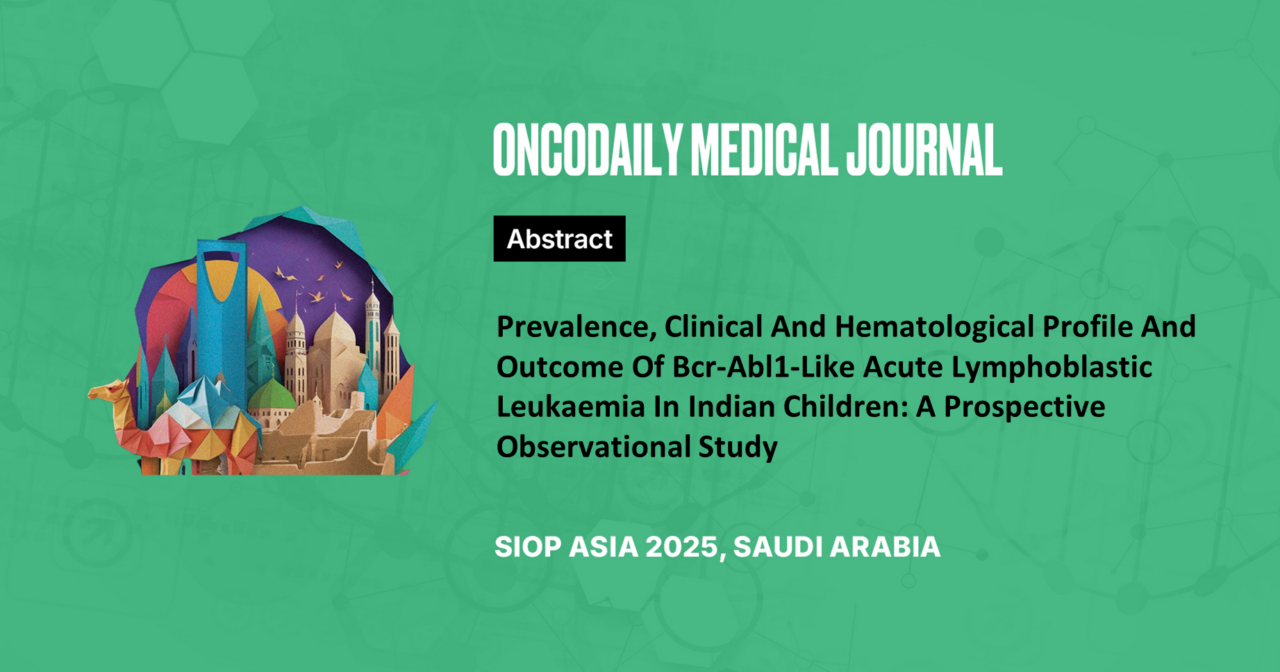Prevalence, Clinical And Hematological Profile And Outcome Of Bcr-Abl1-Like Acute Lymphoblastic Leukaemia In Indian Children: A Prospective Observational Study
Abstract
Introduction: BCR-ABL1-like acute lymphoblastic leukaemia (ALL) represents a perplexing subclass of ALL mainly due to genomic-heterogeneity and non-availability of standardized diagnostic tests. The data on prevalence, clinical-hematological profile and outcome are limited from low-middle income countries. We studied prevalence, clinical & hematological profile and outcome of BCR-ABL1-like ALL in Indian ethnicity.
Methodology: This prospective observational study enrolled children<14 years with B-ALL. Recurrent genetic/chromosomal aberrations were excluded. BCR-ABL1-like aberrations were analyzed using Polymerized chain reaction(PCR) or Next-generation sequencing(NGS). Two groups with/without BCR-ABL1-like ALL (Mut+/Mut-) were compared.
Results: Out of 214 eligible children; 75 with “B-other ALL” were analyzed for BCR-ABL1-like aberrations. Their prevalence was 34/214(15.8%) in B-ALL and 34/75(45.3%) in “B-other” ALL (PCR:33.3% and NGS:53.3%). Majority aberrations were JAK2E16 and ILR7e5/ILR7e6 with PCR and RAS pathway and PAX5 fusion with NGS. Baseline demographic, clinical and laboratory parameters including aberrant flow cytometry were comparable in Mut+ and Mut- groups. Children with day-8 absolute blast count(ABC) were higher in Mut+ group.
High end-induction minimal residual disease(MRD) was comparable in two groups. Number of NCI- standard risk(SR) at diagnosis with high D-8 ABC or high MRD was higher in Mut+ group. Similar results were found when aberrations were analyzed by NGS alone. In all 56 children are alive, 19 had an event (relapse/death). The outcomes were comparable in two groups with median follow-up of 1075 days (IQR:660-1527); when analysis was based on combined as well as NGS-based methodology alone.
Conclusion: We report the prevalence of BCR-ABL1-like ALL in children<14 years as 15.8% of all B-ALL and 45% of “B- other” ALL by PCR/NGS based methodology. A high D-8 ABC was associated with BCR-ABL1-like ALL suggesting poor initial treatment response. Outcomes were comparable irrespective of BCR-ABL1-like aberrations, highlighting the importance of D-8 ABC and MRD based risk-directed therapy to overcome poor outcomes associated with BCR-ABL1-like ALL.





